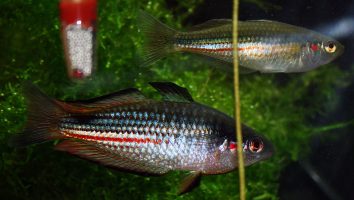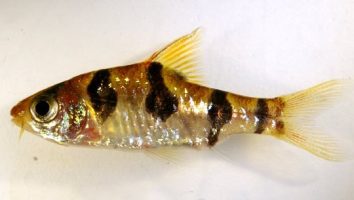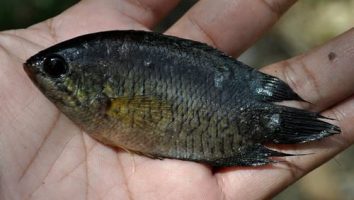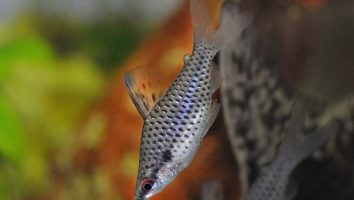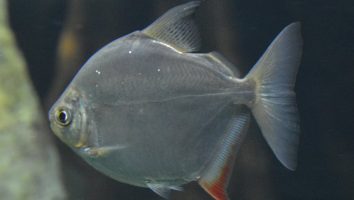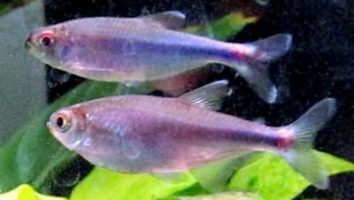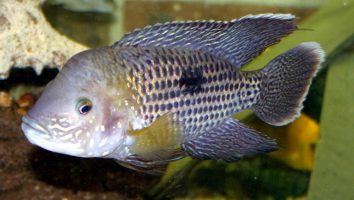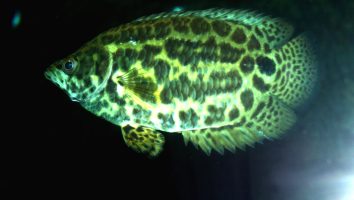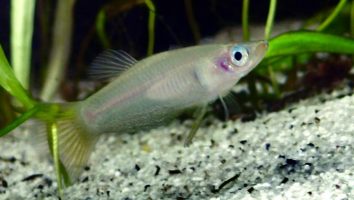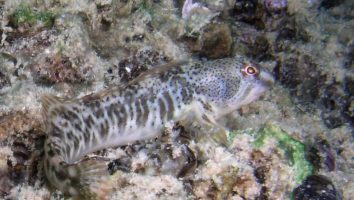Elegant corydoras are a peaceful and social freshwater fish that make a great addition to any tank.
These bottom-dwellers are known for their unique appearance and interesting behavior. They’re also one of the few species of Corydoras that can be kept in a community tank.
If you’re thinking about getting some elegant corydoras, this guide will teach you everything you need to know about their care. Diet, tank mates, lifespan, and more!
Table of contents
Species overview
Elegant corydoras (Corydoras elegans) are a small species of catfish that is native to Brazil. They are found throughout the Rio Negro basin, which is a massive river system that runs through the Amazon rainforest.
This fish is a bottom-dweller and prefers slow-moving water with plenty of places to hide. They are often found in areas with a lot of vegetation, as this provides them with both food and shelter.
Elegant corydoras are a very peaceful fish and do well in community tanks. They are compatible with a wide variety of other fish, as long as they are of a similar size.
This fish is one of the more popular corydoras species due to its elegant appearance and peaceful nature.
Appearance
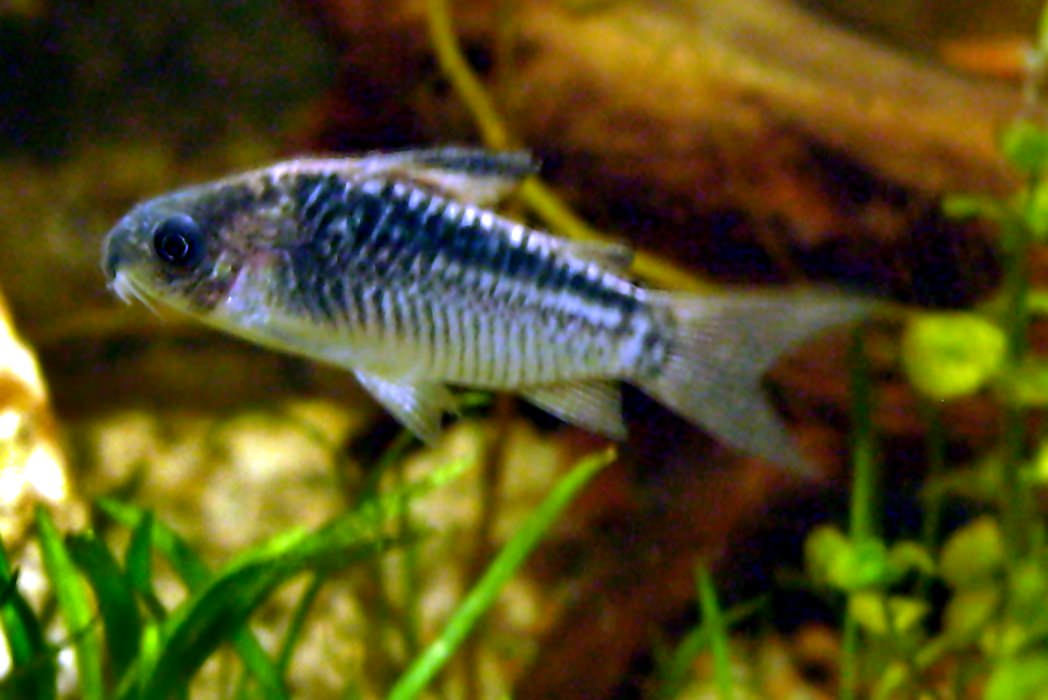
The first thing you’ll notice about this fish is their unique coloration. They have a black body with two white stripes running vertically down their sides. The first stripe is located right behind the head and the second is right before their tail.
Their dorsal and anal fins are both black with a white edge. The dorsal fin is slightly taller than the anal fin and both are rounded at the tips.
Elegant corydoras have a forked caudal fin that’s black with a white edge as well. This fin is slightly taller than their body and tapers off to a point.
Their pectoral fins are black with a white edge and are shorter than their dorsal and anal fins.
These fish have a very slim and streamlined body that’s shaped like a torpedo. This gives them great speed and agility in the water.
Lifespan
The lifespan of an elegant corydoras is around 5 years. This is relatively short when compared to other fish, but it’s still a good amount of time to enjoy your fish.
As with any other animal, there are a number of factors that can affect the lifespan of an elegant corydoras. Poor water quality, for example, can shorten their lifespan significantly.
Stress is also a big factor. If these fish are constantly being harassed by other tank mates or they’re not getting enough food, their lifespan will be reduced.
Size
Elegant corydoras are one of the smaller species of Corydoras cats, with a full-grown size of only about 2.5 inches.
Tank
Tank Size
The minimum recommended tank size for elegant corydoras is 30 gallons. This is for a single fish but we recommend at least a 40-gallon tank if you’re planning on keeping a school of 5 or more fish.
As with most schooling fish, elegant corydoras will do best when they have plenty of space to swim around and explore. They’re not particularly active fish but they do enjoy a little bit of room to move around.
Water Parameters
The elegant corydoras is a tropical freshwater fish that inhabits slow moving rivers and streams in South America.
In the wild, they are used to living in water with a neutral pH, moderate hardness, and a temperature range of 72-79 degrees Fahrenheit.
To keep your elegant corydoras healthy in captivity, you will need to replicate these water conditions as closely as possible.
- Water temperature: 72-79 degrees Fahrenheit
- pH levels: 7.0
- Water hardness: 2-12 dGH
- Alkalinity Levels: 4-8 dKH
What To Put In Their Tank
Elegant Corydoras are a peaceful species that do best in groups. We recommend a minimum of six, but more is always better. They are social creatures that love to swim in schools, so the more the merrier!
When it comes to setting up their tank, you have a lot of options. These fish aren’t too picky when it comes to plants, so you can go with whatever you like.
We do recommend including some plants that will provide them with some cover. They like to have places to hide, and plants are a great way to do that.
The substrate is another area where you have some flexibility. These fish aren’t known to be finicky when it comes to that sort of thing.
We recommend using a classic gravel substrate since it’s easy to find and relatively inexpensive. If you want to get creative, feel free to use something else (like sand). Just make sure it’s not too sharp since these fish like to dig around a bit.
As for other decorations, it’s really up to you. These fish don’t need anything special, so feel free to get creative!
Common Diseases
Elegant corydoras are a hardy and relatively disease-resistant species of fish. However, that doesn’t mean they can’t get sick.
The most common disease that these fish experience is ich. This is a very contagious disease that can quickly affect all the fish in your tank if left untreated.
Ich will present itself as white spots on the body, fish, and gills of your fish. If you notice this, it’s important to act fast.
There are plenty of ich treatments available, but the sooner you start the treatment the better.
Another thing to look out for is infection from cuts. The most common cause of this is keeping your corydoras in a tank with a rough substrate (or aggressive species that want to fight).
In general, the best way to prevent these fish from getting sick is to maintain the quality of the water in their tank. A tank with clean and stable water conditions always leads to healthier fish who are more resistant to disease.
Behavior & Temperament
The elegant corydoras is a shy fish that prefers to stay hidden away most of the time. They are nocturnal fish, so they are most active at night.
During the day, they will often hide in caves or among plants. At night, they will come out to feed on bottom-dwelling invertebrates.
Elegant corydoras are peaceful fish that do well in groups. They are social creatures that like to interact with other fish. However, they can be timid around larger fish.
Tank Mates
Elegant corydoras are a schooling species. That means they do best when kept in groups of at least six fish.
This is important to consider when choosing tank mates. The fish need to be able to stay together in a group. They’re also shy and need to feel secure in their environment.
That said, there are still plenty of options when it comes to finding the right tank mates. In general, you want to look for fish that occupy a different part of the water column.
That way, the elegant corydoras can stick to the bottom while their tank mates do their own thing.
Some good options include:
- Guppies
- Platies
- Mollies
- Tetras
- Danios
- Rasboras
Breeding
Elegant corydoras are a bit more difficult to breed than some other species, but it’s definitely doable with some patience and knowledge.
First, you need to set up a breeding tank. It should be at least 20 gallons and hold water that’s about 80 degrees Fahrenheit. Then, add some live plants and a few hiding places.
Next, you need to find a group of at least six elegant corydoras. Two of those should be males and the rest should be females. The males will have longer fins and a more slender body than the females.
Once you have your group, add them to the breeding tank and let them acclimate. Feed them a diet of live foods and high-quality flakes.
When the fish are ready, the males will start to chase the females around. If everything goes well, the females will lay their eggs on the plants.
Once the eggs are laid, the males will fertilize them and then guard them. Remove the adults from the tank once the eggs are laid to prevent them from eating the fry.
The eggs will hatch in about a week. At that point, you can start to feed the fry live foods. Baby brine shrimp and daphnia are good choices.
As the fry grow, you can slowly start to introduce them to flake food. Keep up with the water changes and you should have no problem raising a healthy batch of elegant corydoras!
Conclusion
The Elegant Corydoras is a beautiful and peaceful fish that is perfect for the beginning aquarist. They are easy to care for and will do well in a community tank.
The only downside to this fish is that they are not very resistant to disease, so you will need to be extra careful with water quality and quarantine any new fish before adding them to your tank.
Other than that, we think they make a great addition to any tank and would recommend them to anyone looking for a peaceful and low-maintenance fish.

